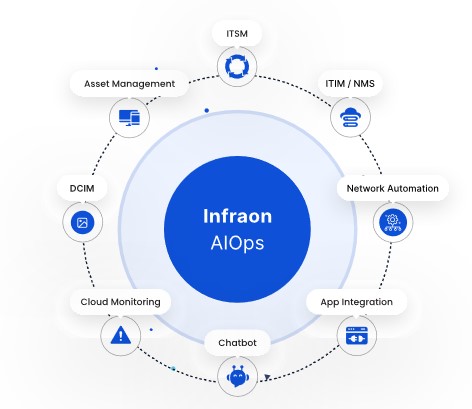Authored by: Suresh Kewalramani, Director – Enterprise Sales, EverestIMS Technologies
In the dynamic world of technology, Managed Service Providers (MSPs) stand at the forefront of innovation and efficiency. As the backbone of IT services for businesses across various sectors, MSPs face the continuous challenge of adapting to diverse client needs while maintaining operational excellence. This is where the power of a unified suite comes into play, revolutionizing how MSPs operate and deliver services.
Here, we delve into the transformative impact of integrating a unified suite of tools and technologies into the MSP ecosystem. The convergence of various functionalities into a single, cohesive platform streamlines processes and unlocks new avenues for growth, scalability, and customer satisfaction.
From enhancing service delivery, optimizing resource management, bolstering cybersecurity, and ensuring compliance, a unified suite is a strategic asset that propels MSPs into a new era of efficiency and innovation. We will explore how this integrated approach not only meets the current demands of the industry but also shapes the future of managed services.
Understanding the MSP Landscape
The MSP industry is a dynamic and evolving sector with unique challenges and opportunities. MSPs are continually grappling with scalability, customer management, and service diversification issues. As the needs of MSP clients evolve, the industry is compelled to adapt and innovate to stay relevant and competitive.
A unified suite for MSPs refers to an integrated set of tools that consolidates various functionalities into a single, cohesive platform. This approach starkly contrasts with traditional, fragmented tools that often lead to operational inefficiencies. A unified suite has several key components that offer streamlined operations, improved service delivery, and a more coherent user experience.
Key Components of a Unified Suite
A comprehensive, unified suite for MSPs typically includes:
- Service Automation: Automating routine tasks to improve efficiency and accuracy.
- Remote Monitoring and Management: Tools for proactive management of client systems.
- Professional Services Automation: Streamlining project management, billing, and client communication.
- Cloud Services Management: Integrating cloud service management for flexibility and scalability.
- Security and Compliance: Ensuring client data is protected and compliant with regulations.
- Reporting and Analytics: Providing insights into operations, client needs, and business growth opportunities.
- Integration and Automation: Enhancing operational efficiency with faster response times, reduced downtime, and elevated levels of customer service.
 Having outlined a unified suite’s key components, we now focus on the tangible benefits these features bring to MSPs. The synergy of these components streamlines operations and significantly enhances the value MSPs can offer their clients.
Having outlined a unified suite’s key components, we now focus on the tangible benefits these features bring to MSPs. The synergy of these components streamlines operations and significantly enhances the value MSPs can offer their clients.
Benefits of a Unified Suite for MSPs
By consolidating various tools and services into a cohesive platform, MSPs can significantly enhance their operational efficiency, improve client satisfaction, and drive business growth. For instance,
Streamlined Operations
The cornerstone of a unified suite for MSPs is the streamlined efficiency it brings to operations. By integrating various tools and services into a single platform, MSPs can significantly reduce the time and effort required for managing multiple software solutions. This integration simplifies daily tasks and ensures a smoother workflow, allowing MSPs to respond more quickly to client needs and focus on delivering quality service.
Cost Efficiency
A unified suite offers significant cost benefits. By consolidating multiple services and tools into one platform, MSPs can reduce expenses associated with purchasing and maintaining several separate software solutions. This consolidation leads to lower operational costs, enabling MSPs to allocate resources more effectively and potentially offer more competitive pricing to their clients.
Enhanced Security
Security is paramount in the MSP industry. A unified suite typically provides robust security features, ensuring all integrated tools and services adhere to high-security standards. This comprehensive approach to security helps protect sensitive client data and reduces the risk of breaches, which is critical in building and maintaining trust with clients.
Scalability
Scalability is another crucial advantage of a unified suite. As MSPs grow and take on more clients, their needs evolve. A unified suite is designed to grow with the business, offering scalable solutions that can be easily adjusted to handle increased workloads or to incorporate additional services as needed. This flexibility ensures that MSPs can expand their offerings without significant overhauls in their operational infrastructure.
Improved Customer Experience
A unified suite enhances the customer experience by providing consistent and integrated services. Clients benefit from the seamless integration of different services, which often results in faster response times, more coherent service delivery, and a single point of contact for various needs. This streamlined client experience can increase satisfaction rates and foster long-term client relationships.
Data-Driven Insights
With all services and tools under one umbrella, MSPs gain access to comprehensive data analytics and insights. This unified data approach enables better decision-making, providing a holistic view of operations, client interactions, and service efficiency. Leveraging these insights can lead to improved services, more personalized client interactions, and the identification of new growth opportunities.
Incorporating a unified suite into an MSP’s operational model presents numerous benefits. Adopting a unified suite could be a key differentiator in a competitive market as the MSP landscape evolves. However, there are a few challenges to implementing the unified suite.
Implementation Challenges and Solutions of a Unified Suite
Implementing a unified suite for MSPs involves numerous challenges, each requiring specific solutions. Here are some of the key challenges and corresponding solutions:
- Integration of Tools and Platforms: Overcome complexity in integrating diverse systems by using APIs, custom middleware, and a microservices architecture
- Data Security and Compliance: Ensure client data security and regulatory compliance using robust encryption, secure storage practices, regular security updates, and audits.
- Scalability and Performance: Design a cloud-based, scalable suite with load balancers, scalable databases, and elastic computing for growing client and data demands.
- Customization and Flexibility: Cater to diverse client needs with a modular suite offering configurable options.
- User Experience and Accessibility: Prioritize intuitive UI/UX and accessibility, supplemented with training and support materials.
- Continuous Monitoring and Support: Utilize automated monitoring tools and AI analytics supported by a dedicated, trained support team.
- Cost-Effectiveness: Balance development and maintenance costs with quality service through optimized resources and investments in cost-effective technologies.
- Technological Advancements: Stay updated with emerging technologies through continuous learning, participation in tech forums, and strategic incorporation of innovations.
Developing a unified suite for MSPs is dynamic and requires continuous evaluation and adaptation.
By addressing these challenges with practical solutions and adopting best practices, MSPs can meet the evolving needs of their clients and the market.
Conclusion
Transitioning to a unified suite is a significant step for MSPs looking to streamline operations and enhance service delivery. By following the above best practices and tips, MSPs can ensure a smooth transition and maximize their ROI. Ultimately, a well-implemented unified suite boosts operational efficiency and positions MSPs competitively in the market, unlocking their full potential to meet diverse service needs.



